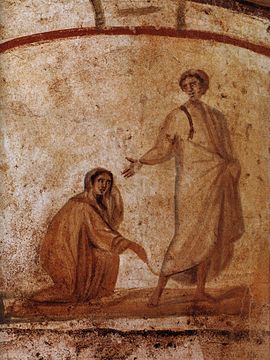Underestimating serious problems
While researching background information on a post I’ve been picking away at for several weeks, I came across a problem that bothered me to the point where I had to pull some books out of storage.
As you no doubt recall, the consensus explanation for the Synoptic Problem posits a “Q” source that Matthew and Luke used. But they also copied Mark.

According to the theory, the authors of those two later gospels used their sources completely independently, and edited their material according to their own tendencies. So when we happen upon a passage in which Matthew and Luke redact Markan source material in exactly the same way, we take notice. We call these passages “minor agreements,” in keeping with NT scholarship’s penchant for underestimating potentially fatal flaws.
Sometimes these agreements span just two or three words, and even in this case it’s only five words, but remarkable nonetheless. As the woman with the issue of blood approaches Jesus through the crowd, she reaches out.
- Mark 5:27:
ἐλθοῦσα ἐν τῷ ὄχλῳ ὄπισθεν ἥψατο τοῦ ἱματίου αὐτοῦ
(having come in the crowd behind touched the clothing of him)
- Matthew 9:20b:
προσελθοῦσα ὄπισθεν ἥψατο τοῦ κρασπέδου τοῦ ἱματίου αὐτοῦ
(having approached behind touched the fringe of the clothing of him)
- Luke 8:44a:
προσελθοῦσα ὄπισθεν ἥψατο τοῦ κρασπέδου τοῦ ἱματίου αὐτοῦ
(having approached behind touched the fringe of the clothing of him)
Interpolations and non-interpolations
Preliminary checks online showed that the reading in the extant manuscripts of Luke can either look like Matthew or like Mark. The Markan reading — without the fringes — is much less common. However, its existence causes us to wonder which is correct, and what are the arguments for preferring one over the other.
I especially wanted to see what Burnett Hillman Streeter and Bruce Manning Metzger had to say about the matter. Streeter’s 1924 book, The Four Gospels, contains an entire chapter dealing with the minor agreements in which he explains them in light of the Two-Source Hypothesis.
Here’s what Streeter had to say on the subject: Continue reading “What’s the Matter with Biblical Scholarship? Part 2”
